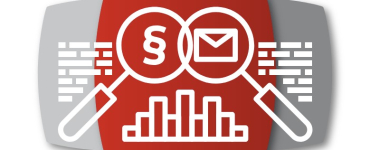Dangers for Email Marketing: How senders can maintain their good reputation
The worst marketing email is one that doesn’t even make it to the recipient. High deliverability is therefore essential. But every so often, recipients will reject your emails for no apparent reason. And in the worst case you, as a sender, will end up on a so-called blacklist, and your emails will no longer be delivered to all recipients. In this article, we will therefore be looking at bounces, blacklists, and spam traps.
Returns, or bounces, are emails that, for a variety of reasons, do not make it to the recipient. Soft bounces are temporary errors like a full in-box or an overloaded mail server. In this case, it can certainly be worth re-sending the email to that recipient at a later time. In contrast, hard bounces are permanent errors, such as a non-existent email address. And these should not, at any cost, be ignored – because the devil is in the detail.
Whether the return is a soft or hard bounce can be seen in the status code that the receiving mail server sends to the sender server. If this code begins with a 4, it is a soft bounce; if it starts with a 5, it is a hard bounce, meaning a permanent error. If the error is caused by a technical failure, it is certainly possible that it will at some stage be resolved, and the corresponding email address will again be reachable.
Anyone who thinks that they can simply ignore hard bounces is treading on dangerous ground: Many Internet service providers (ISPs) and the producers of spam filters pay close attention to senders’ bounce rates, meaning the proportion of emails from a particular sender that are rejected as hard bounces. If this rate is too high, then it looks suspiciously like the sender is careless – i.e. is not maintaining address lists properly – or is even sending spam. In the worst case, the sender will be completely blocked by the provider. So:
- Keep your lists clean and remove hard bounces immediately, or even better, automatically. By the third hard bounce at the latest, the email address involved should have disappeared from your mailing list.
- If you are not sure whether it’s a hard or a soft bounce, remove the address from the list.
- Make sure that your hard bounce rate never exceeds 1 percent.
- Always use double-opt-in for registering new subscribers.
You keep your lists clean, remove hard bounces immediately from your mailing lists, and you think you’re now on the safe side? Unfortunately not, because there are also so-called spam traps. Spam traps are email addresses that are used by ISPs and operators of blacklists, among others, to identify potential spammers. Recycled spam traps are email addresses once used by real people, but that have at some point been shut down. Six to twelve months after the deactivation, such an address can be reactivated as a spam trap. Given that no communication has taken place over this email address for a long period of time, ISPs and operators of blacklists assume that the sender of any incoming emails is not maintaining their address list effectively – meaning, for example, that the hard bounces have not been removed – and they put this sender on a blacklist. A special form of spam trap is the pristine spam trap – an email address that has never been used for communication, but was simply published in the Internet as a decoy. Pristine spam traps are as a rule found by so-called harvesters, programs that automatically search the world wide web for email addresses which are subsequently sold.
If you do end up on a blacklist, it is very difficult to ever get off it again. So, what can you do to make sure that you as a sender never get blacklisted in the first place? If you follow these tips, you will at least minimize the risk.
Hands off bought or rented address lists
Never send emails to addresses from bought or rented lists. That is at the very least questionable with regards to the new General Data Protection Regulation, but it will certainly damage your deliverability and may get you blacklisted.
No more emails to addresses with hard bounces
Remove hard bounces as quickly as possible from your mailing lists. Invalid email addresses can become active again as spam traps after a period of time, and can result in your appearing on a blacklist. A bounce rate that is too high makes you look like a spammer to recipients, who may then decide not to accept any more emails from you.
Careful with emails to addresses without a response
You should also at least be cautious with email addresses that have not reacted to your emails for a longer period of time. In the worst case, there are no real recipients behind them, meaning they are spam traps; but even in the harmless case, they are contacts that delete your emails unread or are so annoyed that they put them in the spam folder. Both damage your reputation as a sender. However, this is the case first and foremost for typical consumer newsletters.
Communicate regularly
Email addresses that you have not written to for more than six months could in the meantime have been transformed into spam traps without you realizing it, seeing as you have not registered any hard bounces. For address lists that you have not used for a long time, special care needs to be taken.
In its criteria, the Certified Senders Alliance, a whitelisting project of the eco Internet Association in cooperation with the German Dialogmarketing Association (DDV), requires a hard bounce rate of maximum 1 percent. So that bounces and bounce management don’t become a problem in the first place, the email experts at the CSA also recommend always using the double-opt-in process for the registration of new subscribers. The complete CSA Admission Criteria can be found here: https://certified-senders.org/wp-content/uploads/2017/07/CSA_Admission_Criteria.pdf.




